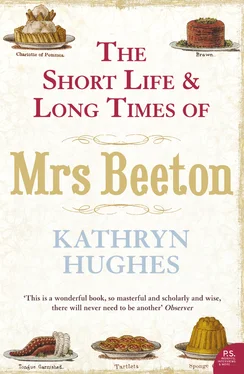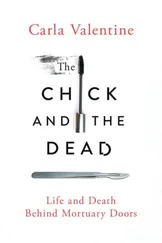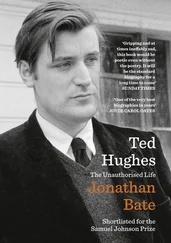Once the crowds were disgorged – in 1843, the year that Isabella arrived in Epsom, it was reckoned that 127,500 extra souls poured into the town for the Derby – the party continued, helped along by liberal supplies from the temporary beer and spirit stalls. Up on the Hill, the large bank rising at the edge of the racetrack, there was a temporary funfair with swings, roundabouts, Italian hurdy-gurdy players, and acrobats who insisted on twisting themselves into impossible shapes. Winding among the crowd you could see jaunty perennial eccentrics like ‘Sir’ John Bennett, a prosperous jeweller from Cheapside who resembled a beery Father Christmas and would drink anyone’s health while ambling along on his cob. Others, who liked to think themselves fashionable, bought cheap German articulated wooden dolls and crammed them around the brims of their hats – an odd craze that no one could ever quite explain.
This gaggle of humanity was augmented by a fair number of gypsies, who had gathered the previous weekend on the racecourse for ‘Show Out Sunday’, their annual meeting of the clans. Fortunes were told, palms crossed with silver, and heather thrust under reluctant noses. The place was a petty criminal’s paradise: in the squawk and clatter it was child’s play to pick a pocket or sneak off with someone else’s lunch. Prostitutes worked swiftly and unobtrusively, card sharps blended back into the crowd at a moment’s notice. A temporary magistrates’ court was set up in the Grandstand to deal with all the extra business, and additional policing was, by tradition, partly paid for by the winner of that year’s Derby. During race week the manager of the Epsom branch of the London and County Bank kept a loaded rifle with a fixed bayonet close by his desk while Baron de Tessier, one of the local grandees and Steward to the Course, hired extra police protection for his family. Yet still it felt like a losing battle: right-minded burghers could only fume over the way their lives had been so rudely interrupted by the incomers. Unless, of course, they happened to be publicans, shopkeepers or pie makers, in which case they hiked their prices and pasted on a welcoming smile.
Artists loved the Derby, although not necessarily for its horses, which they tended to paint as little rocking creatures whose hooves never quite contacted the ground. It was the crowds they came to see. Over the next century, Millais, Degas, ‘Phiz’, Doré, and Géricault would all take their turn at trying to get the spirit of the place down on paper. George Cruikshank did a brilliant 6-foot cartoon strip called ‘The Road to the Derby’, showing every aspect of human and horsey life on the long trail down from London. But the most successful execution came from William Frith. His Derby Day of 1858 (the not very inspirational title was suggested by Henry Dorling) is a wide-screen panorama of the crowd on the Hill, consisting of ninety distinct figures. Carefully composed in his London studio in a series of artful triangles, you will find smocked countrymen, sinister gypsies, tipsy ladies, flushed punters, a sly thimble rigger, and a hungry child acrobat who watches in disbelief as a top-hatted footman unpacks a feast (the child model, hired from the circus, proved to be a menace in the studio – somersaulting into props and teasing the little Friths about their posh manners).
Derby Day was so hugely popular when it was shown at the Royal Academy that it had to be protected by a policeman and an iron railing in order to stop the admiring crowds pitching forward. On the stately world tour that followed, the painting attracted huge attention wherever it went. Since Frith was known to have been paid a whopping £1,500, Derby Day naturally spawned a whole host of flattering copy-cats. The best of these, the much engraved At Epsom Races, 1863 by Alfred Hunt, rearranges the tipsy ladies, adds an urchin and some shady tradesmen in an attempt to recreate that same sense of fluxy human life.
What pulled artists to Epsom was the fact that the racetrack was a place where the lowest and the highest met, a space outside the normal social order. Or as the Illustrated London News put it: ‘there is a sort of magic in the words Epsom Races, which arouses the hopes, recollections, anticipations, and sympathies of hundreds and thousands of people of all classes of society.’ Essentially a rich man’s hobby, the track had been dominated for decades by aristocrats who travelled around the country from course to course. They were shadowed by their grooms who, in the days before horseboxes and trains, were responsible for riding the precious beasts from Goodwood to Ascot to Doncaster in preparation for the next meeting. Behind the grooms trailed a job-lot of racing ‘types’ – bookies, gypsies, hucksters of every kind. Periodically this odd caravan trundled into well-regulated market towns, took over the taverns and local manors, tumbled the servant girls, cheeked the policemen and made an almighty mess, departing before anyone could be quite sure exactly what they had seen and heard.
Corruption was part of the weft of the sport of kings, which only added to its seedy glamour. Horses were nobbled, trainers coshed, jockeys squared, fortunes won and lost, all under the shadiest of circumstances. Epsom in the 1840s was especially rich in this kind of rottenness. In 1844 the Derby was won by a horse called Running Rein, who turned out to be a 4-year-old named Maccabeus (the Derby was strictly for 3-year-olds). The concealment had been managed by painting the animal’s legs with hair dye bought from Rossi’s, a smart barber’s shop in Regent Street. There was nothing new about the trick. With record-keeping so hit-and-miss, it was simple to lie about a horse’s age or even do a straight swap. The case of Running Rein, however, was referred to the Jockey Club. The publicity surrounding the sorry business only served to show half-delighted middle-class newspaper readers what they had always suspected: that racing was run by decadent toffs and their rackety hangers-on whose glory days could not be gone too soon.
The, by now, infamous hair dye had been traced to Rossi’s by Lord George Bentinck, the ‘Napoleon of the Turf’, and the whole incident investigated initially by his protégé Henry Dorling, the Clerk of the Course at Epsom, who swiftly declared that Orlando, the horse second past the finishing post, was this year’s official Derby winner. Over his lengthy tenure it was Dorling’s great achievement to bring to Epsom his own bourgeois brand of probity, order and storming profit. His Sporting Life obituary recalled admiringly how ‘promptitude and regularity were the order of the day in all … [his] business arrangements’, although the fact that newspaper had once been managed by his son may account for some of the fulsome tone. Even so there could be no denying that by the 1850s Dorling had managed to make a substantial change in the racecourse’s culture, turning it from a discredited and slightly sleazy club for aristocrats and chancers into virtually a family business, complete with programmes, ledgers, and a tidy moral climate. The sort of thing that Queen Victoria, had she deigned to return after her damp squib of a visit in 1840, might actually quite have liked.
This process of cleaning up and sorting out had been started by Henry Dorling’s father, William, who had arrived in the town in 1821. Family legend has him riding over the Downs from Bexhill, where he worked as a printer, and seeing Epsom spread beneath him as if it were the Promised Land. Deciding that his destiny lay there, Dorling returned to Bexhill, scooped up his wife, six children, and printing press and retraced his steps over the county border into Surrey. More practically – and the Dorlings were nothing if not practical – William had spotted that Epsom, a town full of business and bustle, did not have a resident press. Moving there would assure him brisk custom from every auctioneer, estate agent, parish officer, butcher, baker, and candlestick maker in the place. In addition, he would continue as he had in Bexhill to combine his printing business with a circulating library and general store. For as well as lending you the latest novel, William Dorling could sell you a shaving cake, a set of Reeves paints or a packet of Epsom Salts, hire you a piano, supply you with fine-quality tea from the London Tea Company or a copy of Watts’s Psalms and Hymns and insure your property through the Kent Fire Office. And then, when you did eventually die, it was Dorling’s job as registrar to record the fact, along with the happier news of any births and marriages that occurred within the town. In fact there was not much you could do in Epsom without running into William Dorling.
Читать дальше












